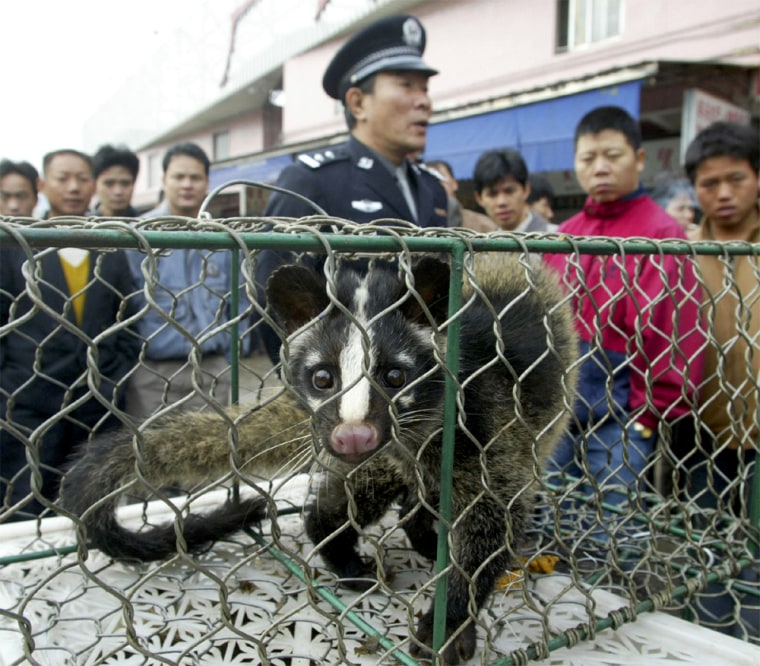The civet cat has a definite image problem.
Nine months ago, the animals were banished as suspected spreaders of the SARS virus, only to be back on the menu after the outbreak subsided.
Now they and other wild animals sold as food are again being targeted for slaughter as China seeks to block a re-emergence of SARS. Some 10,000 civets have been ordered drowned, electrocuted and incinerated by Saturday.
'A damned creature'
“People eat wild game for its supposed health-giving properties, but the civet had come to be known as a damned creature,” said Hu Xueming, deputy general secretary of the Guangzhou Food and Beverage Association.
Scientists have found no incontrovertible proof that civets are responsible for SARS’ jump to human beings, but they have found the virus present in the breed.
The civets’ unenviable fate seems sadly at odds with its origins as a shy, fruit-eating tree dweller that just happens to be prized as a delicacy in southern China.
Civets are mongoose-like animals found throughout Africa and Asia and only distantly related to the common house cat. Some species are ground-dwelling and omnivorous, although the Chinese species tied to the SARS virus, the masked palm civet, lives in trees and eat oranges, papayas and mangos.
Members of the Viverridae family, civets have a pointy, striped nose like a weasel, with a long, cat-like body and tail. Most are between five and 11 pounds, but can weigh up to about 25 pounds.
Known for medicinal qualities
Civets are usually only served in specialty wildlife restaurants, called “yewei,” or “wild taste” in Chinese. Often located in hilly rural areas on the edge of Guangzhou and other southern cities, the restaurants keep live animals in cages, awaiting the customer’s selection, then slaughter them on the spot.
Other than its distinctive flavor, civet meat is also credited with having medicinal qualities. Consumers say civet flesh can improve male virility, cure skin diseases, and improve other ailments.
There are various forms of preparation, but the most popular is to fry the meat with soy sauce adding bird’s nest for flavor and nutritional value, Hu said.
“You have to eat it while it’s hot, because if it gets cold the oil will congeal and you’ll have a gamey smell,” Hu said.
Elsewhere in Asia, civets are hunted for their fur, which is gray or brown and can have stripes or spots, and also caged for their musk which is extracted for use in making perfume.
Civet dining isn’t cheap. The animals can fetch $10 a pound — a princely sum in China, where the average urban worker makes only about $700 a year. An average platter in Guangzhou costs $8-$10.
Diminishing demand
Yet with the factories of southern China powering an economic boom, residents of Guangzhou and other cities can afford it. Demand had been rising for years, during which civets and other wild animals were seized from markets and breeding farms closed.
But after last year’s ban, which was lifted in August only to be reimposed this week, the civet’s popularity with diners started to wane.
Many were scared off by the animal’s association with the SARS outbreak, Hu said. The ban makes it illegal for restaurants to serve civet, have it on the menu or advertise it.
The civet’s return to obscurity could be the best outcome of the slaughter, according to Beijing environmentalist Guo Geng. He wants the animals released into the wild.
“I’d love it if Cantonese abandoned eating the civet. We shouldn’t be worried about them spreading disease because when they see a human they turn and run,” Guo said in an interview with the Chinese Web site Sina.com.
Other animals suspected of carrying the SARS virus and ordered slaughtered include raccoon dogs, a primitive canine with raccoon-like facial markings, and three types of badgers.
